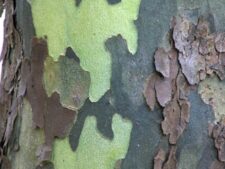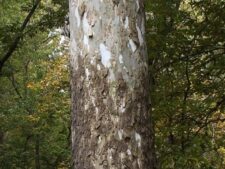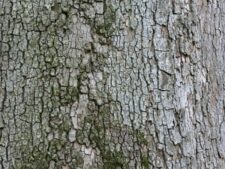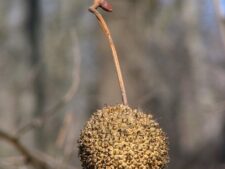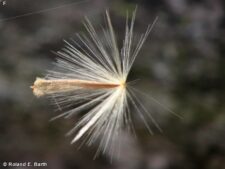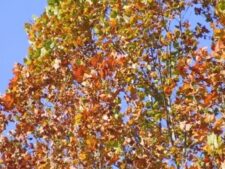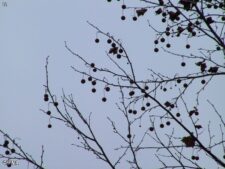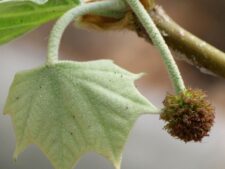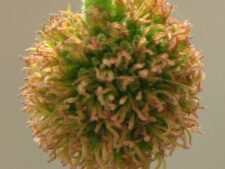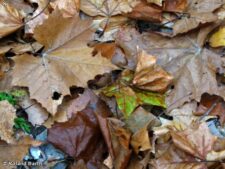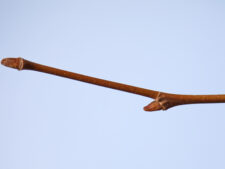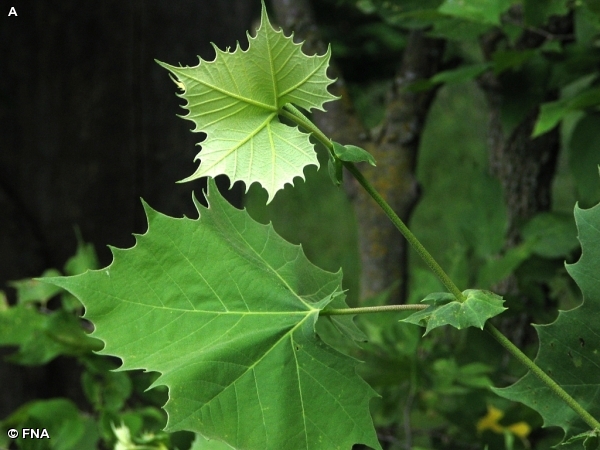
This massive tree grows up to 150 feet tall and 3 feet and more in diameter. Its bark varies from a “camouflage” pattern on young trees and branches (B), to flaky brown and green closer to the base of older trees (C,D). The large leaves, usually with 5 pointed lobes, reach up to 10 inches across. Miniature versions of the leaves (stipules) surround the leaf stalk (A). The seeds are tightly packed into light brown balls which dangle from stalks (E). An individual seed is shown here in the spring (F). These may be seen on some trees well into winter to help identify that tree during that season (H). The fall foliage is a colorful combination of greens and reddish-browns (G). Images “I” and “J” show the flowers in early April. The leaves on the ground under a Sycamore in October are shown in image (K).
Grows on floodplains, flowering in April and May. But the flowers are high up in the tree and rarely seen. We are at the northern limit of its natural range. When Prince Maximilian floated back down the Missouri River in 1834, he documented the first Sycamore he saw again where the Boyer River joined, just northeast of Neale Woods. In Fontenelle Forest, common along Walking Club Trail. At Neale woods, common along MRE Trail.
The content of NatureSearch is provided by dedicated volunteer Naturalists of Fontenelle Forest who strive to provide the most accurate information available. Contributors of the images retain their copyrights. The point of contact for this page is: Roland Barth.

